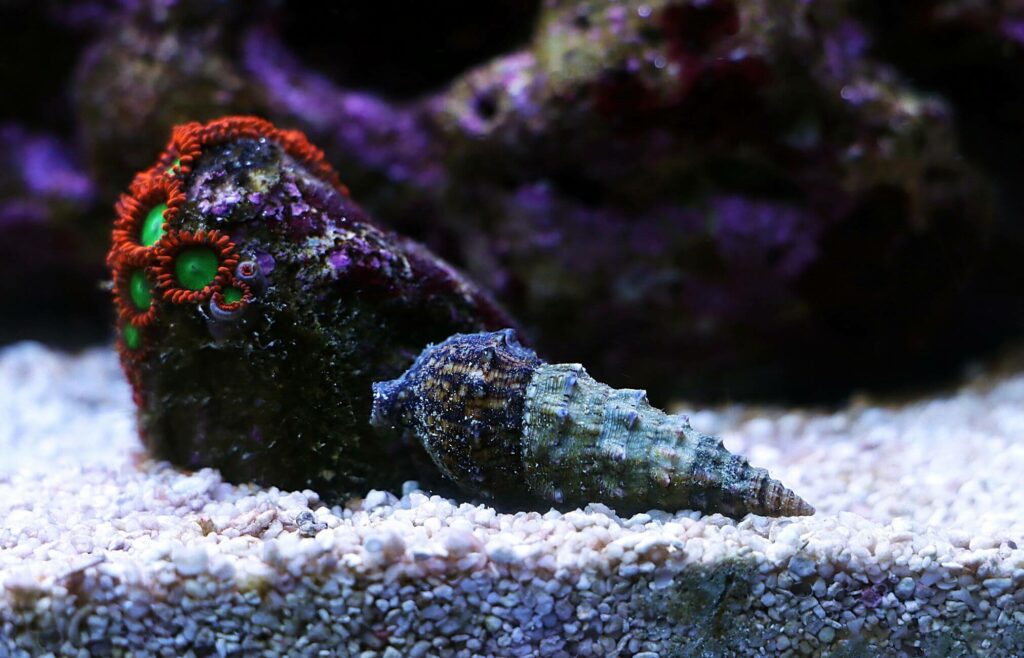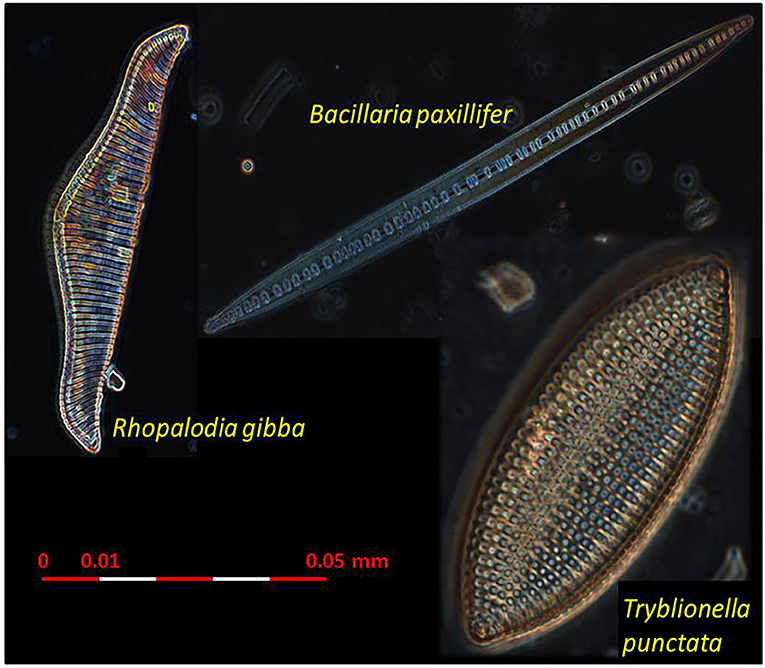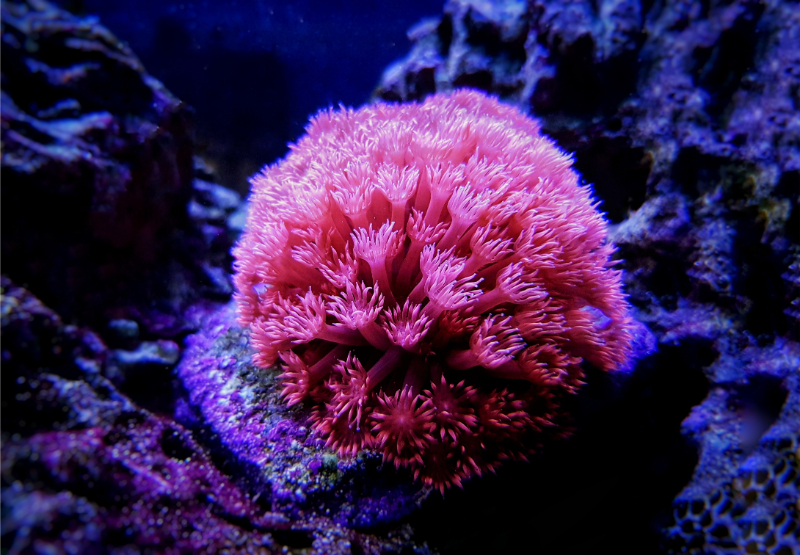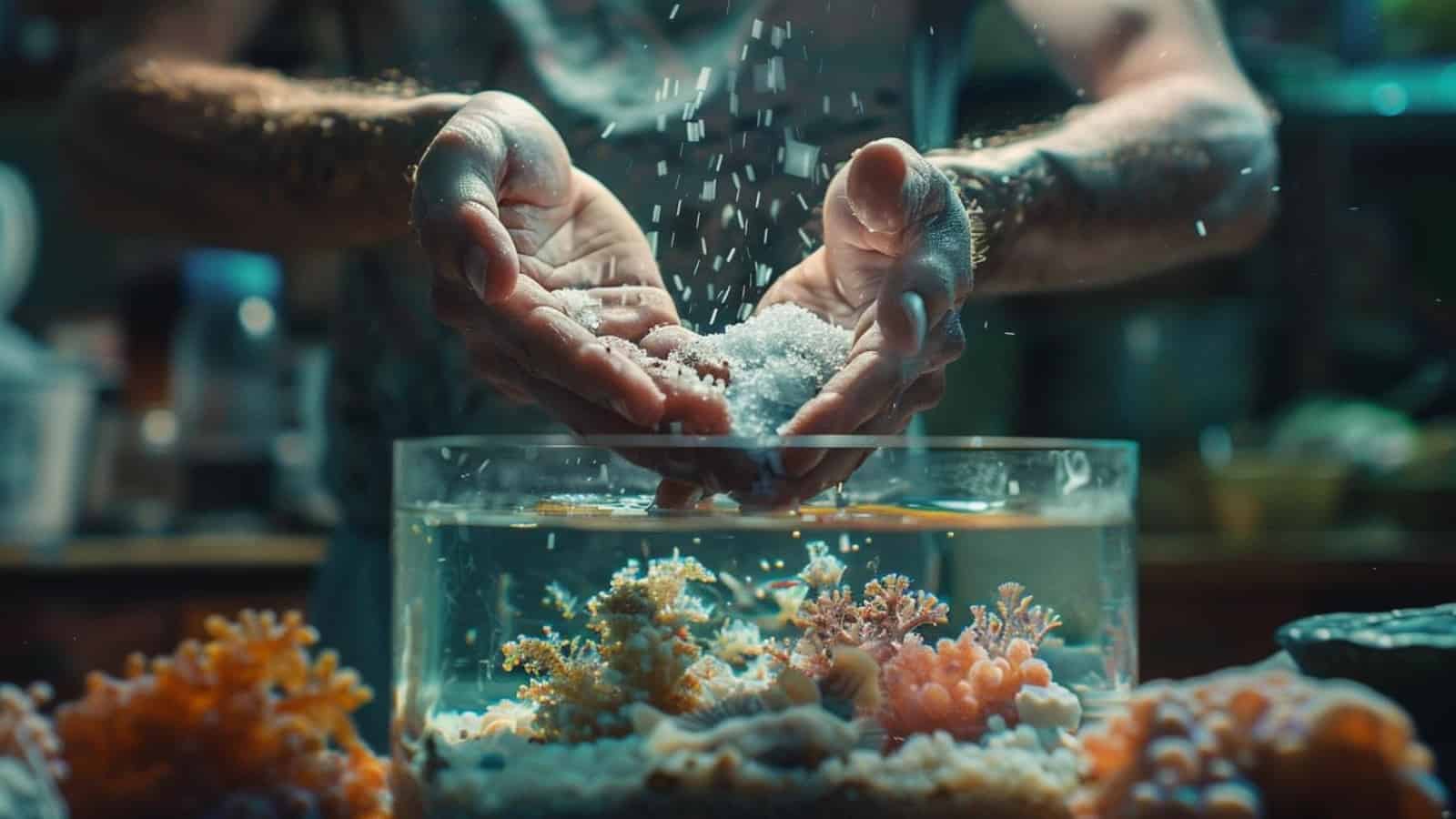Here at Aquarium Source we are all about cute species and Cerith Snails are among the best! We know what you will probably say, “they are just a moving shell!” and that a puppy is cuter but, can your puppy clean the house? Got you!
These tiny snails are widely known for keeping your aquarium clean, eating all kinds of organic matter from coral shedding to fish feces and algae. Good luck training your puppy to do that!
This guide will walk you through all the steps needed to succeed as a Cerith Snail owner. You will learn the proper tank size, diet, behavior and which tankmates to add and which to avoid since you don’t want your snail to be part of the menu.
Let’s do this!
Quick Facts 
| Scientific Name: | Cerithium caeruleum |
| Other Names: | Creeper snail, Horn snail |
| Reef Safe: | Yes! |
| Lifespan: | 2 years |
| Size: | 1/2 inch and rarely over 1 in |
| Care: | Easy |
| Diet: | Detritivores: any organic matter in the tank. |
| Water Parameters: | 74 to 80F, 8.1 to 8.4pH, 8 to 12dKH, 1.023 to 1.025SG |
| Tank Size: | 1 gallon for 2 cerith snails |
| Behavior: | Paceful |
| Breeding Difficulty: | Low but hard to keep youngsters alive |
Species Summary
Cerith snails (Cerithium caeruleum) are best known as scavengers and sometimes referred to as the Creeper snail or Horn snail. These genteel gastropods spend their time picking substrate clean of dead matter and uneaten food particles. Just call this species nature’s Roomba!
While Cerith snails are seen as the worker bees of the tank, they are also charming additions to aquarium families.
In the wild, these tiny and unobtrusive invertebrates scour the Indo-Pacific waters near Kenya, Mozambique, Tanzania, and Madagascar. Their massive span actually covers areas within Mediterranean, Pacific, and Caribbean waters.
Author Note: Cerith snails love shallow, warm waters that allow them to scavenge the floors of tidal flats, seagrass meadows, and mangrove swamps.
Appearance
The Cerith snail is famed for its spiral shell with a pointed tip. Cerith shells are treasured among collectors.
While most Cerith shells have black or almost-black coloring, it’s possible to find lighter shells with patterns of alternating light and dark bands.
In fact, dark shells that appear to have a uniform color actually have tiny dot patterns that can be seen when you look closely enough. The surface of the shell is always rough.
Lifespan
Once it has settled into a new home, the average Cerith snail can have a lifespan of 2 years.
The Cerith snail’s reputation for hardiness has helped it to become a must-have aquarium addition for hobbyists interested in keeping clean, balanced tanks.
In fact, part of the reason why Cerith snails are so popular in home aquariums is because they can survive being transported.
Average Size
Known for being “tiny and tidy” helpers, Cerith snails have an average size of 1/2 inch and in rare occasions they grow longer than 1 inch. They are tiny enough to essentially “disappear” in an aquarium’s substrate.
Cerith Snails Care
The Cerith snail is one of the easiest aquarium residents in existence! However, the right conditions can keep these busy workers healthy and happy for as long as possible.
The good news is that Cerith snails thrive in essentially all the same conditions that are required for all fish and invertebrates.
The thing to know is that acclimation can be slightly trickier with Cerith snails compared to other species. Drip acclimation is highly recommended to help your new snails gradually adjust to the salinity, mineral content, and nitrogenous waste in a tank.
Author Note: Cerith snails also need consistency once they are established. Any wild swings in water parameters can wipe out Cerith snails pretty quickly.
Tank Size
There’s no minimum tank size required for Cerith snails so anything over 1 gallon will be appropriate. These snails can be right for anything from jumbo tanks to nano tanks.
We’ll cover how to do the math on how many gallons you need based on how many Cerith snails you’re housing a little further down in this article.
What to Put in Their Tank
Cerith snails require very little to thrive. A sand substrate that is deep enough for a snail to bury its body is essential for providing food and hiding places. Additionally, Cerith snails use live rock to source food, hide from predators, and generally feel “cozy.”
A good filtration system is also needed for Cerith snails. These mollusks can be lethally sensitive to built-up nitrogenous waste. Ideally, an aquarium with Cerith snails will have ammonia and nitrite levels as close to 0 parts per million (PPM) as possible.
Water Parameters
- Water temperature: 74 to 80°F
- pH levels: 8.1 to 8.4
- Water hardness: 8 to 12 dKH
- Specific gravity: 1.023 to 1.025
How Many Cerith Snails Per Gallon?
The Cerith snail has what hobbyists call a low bioload. The general rule with keeping Cerith snails is that one to two snails per gallon of water is ideal.
For this reason, Cerith snails are even appropriate for 10-gallon nano tanks (check our 4 Best 10-Gallon tanks). Cerith snails are also popularly used in 5-gallon pico reef tanks consisting of small fish and coral.
Author Note: It is important to keep your Cerith snails balanced with other species. If your tank already has detritivores and algae eaters, limit your Cerith snail ratio to just one per gallon to ensure that there’s enough food to go around for everyone in the “cleaning crew.”
Are Cerith Snails Reef Safe?
The Cerith snail is considered 100{a47be734f0df8d7f120a7df290cf380c79376e8356d1aab405383bb23aa6ce67} reef safe! These peaceful critters will not hurt any tank mates. Unlike other aquarium pets, they have no interest in harassing corals, sponges, or anemones.
Their bodies are too small to accidentally bother or disrupt coral. What’s more, they help to create a clean and hygienic environment for all of your fish and corals that can help everything to live longer.
Cerith snails play an important role in balancing aquariums by consuming organic matter that would normally cause ammonia and other toxic compounds to build up in the water. They also turn over substrates to keep things fresh!
While Cerith snails should not be seen as alternatives to properly cleaning your aquarium, they are certainly great helpers that can make your job much easier.
What Do Cerith Snails Eat?
Cerith snails are classified detritivores which means they will eat any organic matter they stumble upon in the tank.
The self-service meal list for Cerith snails includes:
- Uneaten fish food that lands on the substrate
- Fish feces
- Carcasses of tank mates who have passed away
- Coral shedding
- Slime
- Algae
The Cerith snail is one of the only animals willing to eat brown and blue-green algae.
The reason why it’s important to stick to the rule of housing just one to two Cerith snails per gallon is that starvation becomes a big problem when these snails face overcrowding. In addition to keeping your Cerith snail numbers in check, it’s also wise to only introduce these snails to tanks with established substrates with robust natural “buffets” to nibble on.
Author Note: If you’re worried that your Cerith snails aren’t getting the nutrition they need, treat them to some dried seaweed or macroalgae strips that you place strategically near their hideout spots.
Behavior & Temperament
Cerith Snails are famously docile and peaceful. While starvation is a concern when a tank has overcrowding, these snails do not become aggressive toward tank mates.
You will usually see your Cerith snails picking through substrate when they aren’t hiding. These critters tend to bury their bodies in the evening.

Cerith Snails Tank Mates & Predators
Cerith snails can easily become prey for escargot-loving predators if you don’t carefully plan your aquarium. These snails also face threats from “house stealers.”
In the wild, hermit crabs will move into abandoned Cerith shells. However, it’s not uncommon for hermit crabs to simply evict Cerith snails from their shells when they are feeling bossy. The easiest way to avoid this issue is to ensure that your hermit crabs have plenty of unoccupied shells to move into.
Many other crabs will simply munch on Cerith snails when given the chance. Arrow crabs can be especially aggressive with snails. It’s also important to keep Cerith snails out of tanks with notoriously mollusk-hungry fish. Tank mates to avoid with Cerith snails include:
Any species that eats invertebrates should be considered an enemy of Cerith snails. Even some friends can accidently become foes.
While Tangs, Rabbit Fish, and Angelfish won’t try to feast on Cerith snails, these vegetarians may gobble up algae and other plant-based food sources that Cerith snails rely on. Some agreeable tank mates for Cerith snails are soft corals, sponges, giant clams, starfish (have you seen the cool Chocolate Chip starfish?), shrimp, invertebrates, and most marine fish.
Cerith Snails Eggs and Reproduction
As sexually dimorphic creatures, Cerith snails are easy to tell apart by sex.
They reproduce using intricate courting rituals that include slime trails. While the triggers that activate the mating process are unknown, it is known that the male will create a trail for the female to follow when it’s “time.”
The male will then mount the female to leave a deposit of spermatophore that triggers the female to deposit eggs following fertilization.
Author Note: It’s common for Cerith snails to lay hundreds to thousands of eggs at a time. The female will hide the tiny, transparent fertilized eggs in substrate or rock.
One of the factors complicating Cerith snail breeding in captivity is that the clear, unprotected eggs are vulnerable to opportunistic predators that share the tank. Luckily, abundant wild populations of Cerith snails that are easy to catch and transport make buying these tank additions so simple!
Wrapping Up
Ready to switch from a puppy to a Cerith Snail? Just kidding, we love puppies too so let’s have both! These snails are great for beginners because they are peaceful, easy to care for and very hardy although don’t expect too much movement.
Their aquarium-cleaning diet is a time saver for busy aquarists and as long as their mates don’t have a taste for mollusks, your Cerith Snails will be safe.
Just remember that for reproduction keeping the eggs safe is the most important and challenging thing to do.
If you are looking for a colorful snail try the Bumblebee Snail and for other peaceful fish check our Saltwater Care Guides.
By the way, don’t forget to tag us on Facebook when sharing photos of your slow moving snails and if you have any questions don’t hesitate to reach out to us. Good luck!




